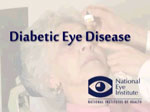Educational Resource Spotlight: Diabetic Eye Disease Vodcast
Healthy Vision Community Programs Database

This easy-to-search resource can help you learn about new ways to address eye health issues and replicate eye health-related projects in your community. Visit the Healthy Vision Community Programs Database.
The National Eye Health Education Program is coordinated by the National Eye Institute, National Institutes of Health, U.S. Department of Health and Human Services. This administrative document may be reprinted without permission.
In This Issue:
-
Celebrate American Diabetes Month by Raising Awareness About Diabetic Eye Disease
-
New Online Resource Houses Data on Leading Adult Eye Diseases
-
Family Connect® Provides Answers For Parents of Children With Visual Impairments
-
EyeCare America Offers New Video Promoting Eye Exam Eligibility
-
Recent Activities and Upcoming Educational Events From ASORN
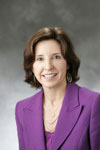
Letter From the Chair of the NEHEP Planning Committee
Knowledge about how to advance eye health continues to grow. The National Eye Health Education Program (NEHEP) has an important role to play in sharing information so that patients receive as much benefit as possible from new insights that emerge from research.
I recently had the gratifying experience of working with Victoria Tseng, M.D., a recent medical school graduate entering an ophthalmology residency; Flora Lum, M.D., at the American Academy of Ophthalmology Hoskins Center for Quality Eye Care; and Fei Yu, Ph.D., a UCLA-based biostatistician, on a study showing that elderly people who have cataract surgery have lower rates of hip fractures than people with cataracts who don’t have surgery. When the study results were published in the Journal of the American Medical Association, NEHEP Director Neyal Ammary-Risch, M.P.H., MCHES, used modern communications tools, including Twitter and Facebook, to disseminate the findings. In an era where increasing numbers of people gather information through electronic media, there are opportunities for sharing information widely and inexpensively. If you have eye health education information that would benefit the broader community of people interested in blindness prevention and eye health, please contact NEHEP and help advance our shared mission.
In addition to sharing information with people living with low vision, NEHEP focuses much of its outreach efforts on populations at higher risk for vision loss, especially those who may not even be aware they are at risk. Over the past five years, NEHEP worked to meet, and in many cases exceed, the goals and objectives set forth in the 2006–2011 Five-Year Agenda. Some of these activities included enhancing the NEHEP Partnership, developing a community health worker initiative as part of our Diabetic Eye Disease and ¡Ojo con su visión! Programs, targeting glaucoma outreach efforts to African Americans, and establishing a new NEHEP program area on vision and aging. I am pleased at all NEHEP has been able to accomplish and am happy to announce that we have just completed the new 2012–2017 Five-Year Agenda, which outlines our goals and objectives for making vision a health priority for the Nation for the next five years. NEHEP will continue to focus its efforts on finding effective, culturally appropriate, and innovative methods to educate those at higher risk about preventing vision loss and those living with low vision about how they can make the most of their remaining sight through vision rehabilitation.
The American Diabetes Association, a NEHEP Partnership organization, has declared November as “American Diabetes Month” and affords healthcare professionals and other community leaders an opportunity to promote annual comprehensive dilated eye examinations for people with diabetes. NEHEP has made significant strides in reaching people with diabetes with eye health information, and the article, “Celebrate American Diabetes Month by Raising Awareness About Diabetic Eye Disease,” in this issue of Outlook provides ideas for how you can use NEHEP resources in your own community. In addition, the Healthy Vision Spotlight highlights Tulare Community Health Clinic, which has established a program that provides diabetic eye disease and occupational eye safety education to Hispanic/Latino migrant and seasonal farm workers.
All of us on the NEHEP Planning Committee will continue to look for opportunities to share knowledge about eye health. Please keep in touch with your ideas and news of successful efforts in your community.
Anne Louise Coleman, M.D., Ph.D.
Chair, National Eye Health Education Program Planning Committee
The Fran and Ray Stark Professor of Ophthalmology
David Geffen School of Medicine at UCLA and
Professor of Epidemiology
UCLA Fielding School of Public Health
NEHEP Welcomes New Planning Committee Members
The National Eye Health Education Program (NEHEP) Planning Committee advises the National Eye Institute on the overall development, implementation, and evaluation of its eye health education activities. NEHEP is happy to welcome four new members to the committee:
 Eduardo C. Alfonso, M.D.
Eduardo C. Alfonso, M.D.University of Miami, Bascom Palmer Eye Institute
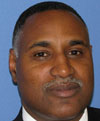 Mario C. Browne, M.P.H., CHES
Mario C. Browne, M.P.H., CHESUniversity of Pittsburgh, Office of Health Sciences Diversity
 Robert A. Copeland, Jr., M.D.
Robert A. Copeland, Jr., M.D.Howard University, Department of Ophthalmology
 Michael Maldonado, O.D.
Michael Maldonado, O.D. Texas Tech University, Paul L. Foster School of Medicine
A full roster of the NEHEP Planning Committee can be found at http://www.nei.nih.gov/nehep/about/roster.asp.
Celebrate American Diabetes Month by Raising Awareness About Diabetic Eye Disease
 American Diabetes Month in November provides an opportune time to raise public awareness about the need for people with diabetes to have dilated eye exams. Diabetic eye disease is a complication of diabetes that includes cataract, diabetic retinopathy, and glaucoma; all can cause severe vision loss or blindness. There are often no symptoms in the early stages of diabetic eye disease, but it can be detected and treated in its early stages.
American Diabetes Month in November provides an opportune time to raise public awareness about the need for people with diabetes to have dilated eye exams. Diabetic eye disease is a complication of diabetes that includes cataract, diabetic retinopathy, and glaucoma; all can cause severe vision loss or blindness. There are often no symptoms in the early stages of diabetic eye disease, but it can be detected and treated in its early stages.
Share information with people in your community, as well as with family, friends, and colleagues. The National Eye Health Education Program (NEHEP) has a variety of materials in English and Spanish available to help you. The following are examples of materials and resources with ideas about how to use them. You can find these materials, as well as additional ideas on how you can make a difference on the NEHEP Diabetic Eye Disease Program page.
Diabetic Eye Disease Education Website
What You Can Do: Link others to this consumer-friendly site where they can learn about early detection, treatment, and follow-up care for diabetic eye disease. They'll also find information on organizations providing financial assistance for eye care and questions to ask an eye care professional.
How You Can Do It: Post the link on your intranet or website. Include information about the website in e-mails and newsletters to your constituents.
Diabetes and Healthy Eyes Toolkit
What You Can Do: Community health workers and other educators can use this toolkit to conduct educational workshops about diabetic eye disease as part of diabetes self-management classes or other community education programs.
How You Can Do It: Order a copy of the toolkit or download the materials online and plan a workshop in your community. Everything you need to know about diabetic eye disease and conducting an educational session is in the toolkit module.
Diabetic Eye Disease Vodcast
What You Can Do: Help others understand how diabetes affects vision. In this video, Dr. Rachel Bishop from NEI discusses diabetic eye disease and what treatments are available.
How You Can Do It: Link to this vodcast from your website, share it through your social media outlets, or send a link to the vodcast to others.
Medicare Benefit Card
What You Can Do: Help others obtain the diabetic eye disease and glaucoma benefit under Medicare. The card contains information about benefit eligibility and where to go to learn more.
How You Can Do It: Distribute this card at health fairs, clinics, and other community locations. Place the cards in your cafeteria or lunch room with a note to “Take one for someone you care about.” Work with local pharmacies to make the cards available to their customers.
¡Ojo con su visión! (Watch Out for Your Vision!)—Photonovella
What You Can Do: Help those in the Hispanic/Latino community better understand diabetes and the importance of having a dilated eye exam at least once a year.
How You Can Do It: Distribute this booklet at locations that provide programs and services to the Hispanic/Latino community, such as community clinics and centers, libraries, and houses of worship.
Don’t Lose Sight of Diabetic Eye Disease Brochure
What You Can Do: Make sure that eye care professionals in your community know about this brochure, or give it to people with diabetes that you work with.
How You Can Do It: Stop in at local eye care professionals’ offices and ask them to make it available to their patients. Leave a copy and be sure to provide information about how they can order it. If you work with diabetes self-management programs, give this brochure to people you work with.
Diabetic Eye Disease: An Educator’s Guide
What You Can Do: Health professionals and health educators can use this tool to conduct one-on-one educational sessions for people with diabetes or conduct workshops with small groups of people with diabetes to educate them about preventing vision loss.
How You Can Do It: Use the flipchart as a teaching tool, play the self-guided module in waiting rooms, or use the PowerPoint to conduct an educational program for a diabetes self-management class.
Print and Radio Public Service Announcements (PSAs)
What You Can Do: Enlist the mass media. NEHEP offers a variety of downloadable print and radio PSA scripts about diabetic eye disease.
How You Can Do It: Download print PSAs, available in a variety of sizes, and ask the editor of your local newspaper to run them. Use NEHEP ready-made scripts to record PSAs that your organization can play on your hold line or distribute to local radio stations.
NEHEP Reaches African Americans en Route
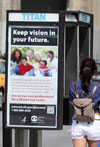
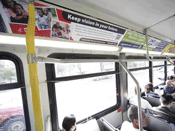 African Americans are at higher risk of developing glaucoma than other racial/ethnic groups and also at a younger age. In order to increase awareness about the disease and stress the importance of early detection through a comprehensive dilated eye exam, the National Eye Health Education Program (NEHEP) worked with transit organizations in New York, NY, and Chicago, IL, to promote glaucoma messages on 20 billboards, 15 phone kiosks, and 220 interior bus cards. These cities were selected based on their rankings as two of the top locations from geospatial data that had high populations of African Americans and usage of public transportation. The ads have been running since June and are expected to reach more than 10 million people.
African Americans are at higher risk of developing glaucoma than other racial/ethnic groups and also at a younger age. In order to increase awareness about the disease and stress the importance of early detection through a comprehensive dilated eye exam, the National Eye Health Education Program (NEHEP) worked with transit organizations in New York, NY, and Chicago, IL, to promote glaucoma messages on 20 billboards, 15 phone kiosks, and 220 interior bus cards. These cities were selected based on their rankings as two of the top locations from geospatial data that had high populations of African Americans and usage of public transportation. The ads have been running since June and are expected to reach more than 10 million people.
NEHEP offers a variety of public service announcements (PSAs) that can be used to promote glaucoma awareness among populations at higher risk, including African Americans; people over age 60, especially Mexican Americans; and people with a family history of the disease. You can use these PSAs in your organization’s newsletters, websites, publications, or other outlets. They can be easily downloaded in both English and Spanish from the NEHEP Website at http://www.nei.nih.gov/nehep/programs/glaucoma/graphics.asp.
New Online Resource Houses Data of Leading Adult Eye Diseases
 More adult Americans are facing the reality of eye disease than ever before. According to the 2012 update of the Vision Problems in the U.S. report by Prevent Blindness America (PBA) and the National Eye Institute (NEI), the number of those people age 40 and older with vision impairment and blindness has increased 23 percent since 2000. The study, conducted by researchers from Johns Hopkins University, provides prevalence rates and estimates cases of age-related eye conditions.
More adult Americans are facing the reality of eye disease than ever before. According to the 2012 update of the Vision Problems in the U.S. report by Prevent Blindness America (PBA) and the National Eye Institute (NEI), the number of those people age 40 and older with vision impairment and blindness has increased 23 percent since 2000. The study, conducted by researchers from Johns Hopkins University, provides prevalence rates and estimates cases of age-related eye conditions.
All data from the Vision Problems in the U.S. report can now be obtained through a new searchable database housed on the PBA website at http://www.preventblindness.org/visionproblems.This unique tool enables users to research and compare a wide range of information, including eye disease and condition, with numbers broken down by state, age, sex, and race.
For more information, please call PBA at 1–800–331–2020 or visit http://www.preventblindness.org.
NEI Launches Contest for Audacious Goals in Vision Research
 The National Eye Institute (NEI) is offering $3,000 awards to as many as 20 contestants who submit the most compelling one-page ideas to advance vision science. The submission deadline for the Challenge to Identify Audacious Goals in Vision Research and Blindness Rehabilitation is November 12, 2012. Winning contestants will be invited to present, discuss, and refine their ideas at the NEI Audacious Goals Development Meeting, to be held February 24 to 26, 2013, in Washington, D.C.
The National Eye Institute (NEI) is offering $3,000 awards to as many as 20 contestants who submit the most compelling one-page ideas to advance vision science. The submission deadline for the Challenge to Identify Audacious Goals in Vision Research and Blindness Rehabilitation is November 12, 2012. Winning contestants will be invited to present, discuss, and refine their ideas at the NEI Audacious Goals Development Meeting, to be held February 24 to 26, 2013, in Washington, D.C.
Since its creation in 1968, NEI has set the national vision research agenda through strategic planning. “The Audacious Goals Challenge is a new tool in NEI strategic planning that aims to gather ideas from across the scientific spectrum to forge new approaches to persistent challenges in vision research,” said NEI Director Paul A. Sieving, M.D., Ph.D. “Whether basic, translational, or clinical, a goal is audacious if it fundamentally changes research or vision care by closing critical knowledge gaps, opening developmental bottlenecks, or providing key elements to translate scientific discoveries into clinical applications.”
The Audacious Goals Challenge seeks ideas that support the NEI mission—to conduct and support research and other programs aimed at reducing the burden of vision disorders and disease worldwide. NEI encourages submissions from people in the private, government, and nonprofit sectors, including scientists, engineers, healthcare providers, inventors, and entrepreneurs, as well as the general public.
Challenge contestants should consult Vision Research: Needs, Gaps, and Opportunities, the most recent compilation of panel reports by NEI. These panel reports describe progress, current needs, and opportunities in six program areas—1) retinal diseases; 2) corneal diseases; 3) lens and cataract; 4) glaucoma and optic neuropathies; 5) strabismus, amblyopia, and visual processing; and 6) low vision and blindness rehabilitation. The reports are issued every five to seven years and represent the work of hundreds of scientists, clinicians, and stakeholders involved in vision research. Vision Research: Needs, Gaps, and Opportunities is available at http://www.nei.nih.gov/strategicplanning/.
Submissions must address why the audacious goal is important, how to achieve the goal, and how realization of the goal will impact the NEI mission. Submissions are limited to 4,000 characters, including spaces (about one page), and must comply with the rules outlined at http://www.nei.nih.gov/challenge.
The NEI Audacious Goals Challenge is being conducted under the America Creating Opportunities to Meaningfully Promote Excellence in Technology, Education, and Science Reauthorization Act of 2010.
Family Connect® Provides Answers For Parents of Children With Visual Impairments
 The National Eye Health Education Program (NEHEP) Low Vision Subcommittee, chaired by Mark Wilkinson, O.D., from the University of Iowa Carver College of Medicine, Department of Ophthalmology and Visual Sciences, worked with two of its Partnership organizations, the National Association for Parents of Children with Visual Impairments and the American Foundation for the Blind, to develop information for a new section on the Family Connect® website that answers questions parents often have about low vision. This new section, “Common Questions Asked by Parents of Children Who Are Visually Impaired,” is available at http://www.familyconnect.org/. A wide variety of topics are discussed, including the importance of low vision evaluations, daily life activities for children, treatment options, and more.
The National Eye Health Education Program (NEHEP) Low Vision Subcommittee, chaired by Mark Wilkinson, O.D., from the University of Iowa Carver College of Medicine, Department of Ophthalmology and Visual Sciences, worked with two of its Partnership organizations, the National Association for Parents of Children with Visual Impairments and the American Foundation for the Blind, to develop information for a new section on the Family Connect® website that answers questions parents often have about low vision. This new section, “Common Questions Asked by Parents of Children Who Are Visually Impaired,” is available at http://www.familyconnect.org/. A wide variety of topics are discussed, including the importance of low vision evaluations, daily life activities for children, treatment options, and more.
For more information about this website, contact Susan LaVenture at Susan.LaVenture@perkins.org.
Going Blind Outreach Reaches Congress
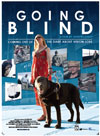 Going Blind, a feature film about coming out of the dark about vision loss, has begun airing on public television stations across the country.
Going Blind, a feature film about coming out of the dark about vision loss, has begun airing on public television stations across the country.
Going Blind is a unique and impactful documentary that follows Peabody-award-winning filmmaker Joe Lovett as he adapts to life with low vision caused by glaucoma. On his journey, Joe meets blind and visually impaired individuals who take him into a new world of technology, resources, and vision rehabilitation.
The outreach campaign, Going Blind and Going Forward, has brought the film to more than 200 organizations around the world. Using it as a tool, organizations have hosted community screenings followed by panel discussions that connect viewers to low vision resources featured in the film. The New Hampshire Association for the Blind has scheduled 27 screenings to date. Its president, George Theriault, said the following:
“We’ve had many referrals from people who have attended [a screening]—people who may have avoided even thinking about what to do next, sometimes for years…discover that help is available. By using the panel of experts following the film, people learn just what kind of help is available.”
For information on how you can get involved, contact Julie Gaynin at Lovett Stories + Strategies at julie@lovettproductions.com or 212–242–8999.
EyeCare America Offers New Video Promoting Eye Exam Eligibility
 EyeCare America is providing free or no-cost (out-of-pocket) eye care. If you are an organization or clinician helping individuals with eye health care needs, learn how to help them see if they qualify for financial assistance by watching the video, How to Help Others at http://www.eyecareamerica.org.
EyeCare America is providing free or no-cost (out-of-pocket) eye care. If you are an organization or clinician helping individuals with eye health care needs, learn how to help them see if they qualify for financial assistance by watching the video, How to Help Others at http://www.eyecareamerica.org.
After answering a few qualifying questions, you will find out instantly if the person you are helping is eligible to be matched with one of EyeCare America’s nearly 7,000 volunteer ophthalmologists. EyeCare America provides two types of service:
- Eligible seniors 65 and older may receive a comprehensive eye exam and care for up to one year, often at no out-of-pocket cost for any condition diagnosed in the initial exam.
- Those who are under age 65, uninsured and eligible, receive a FREE glaucoma exam.
You also have the ability to pull reports to view how many people you have helped and follow up with those who have not yet been seen.
If you have questions, contact Betty Lucas at blucas@aao.org, or call 877–887–6327 (8:00 a.m. to noon PDT).
Recent Activities and Upcoming Educational Events From ASORN
 The American Society of Ophthalmic Registered Nurses (ASORN) has been hard at work over the past several months to launch two new exciting projects: The Ophthalmology Safe Surgical Checklist and a new website.
The American Society of Ophthalmic Registered Nurses (ASORN) has been hard at work over the past several months to launch two new exciting projects: The Ophthalmology Safe Surgical Checklist and a new website.
To help ophthalmic ambulatory surgical centers (ASCs) meet requirements of the ASC Quality Reporting Program, the American Academy of Ophthalmology and Ophthalmic Mutual Insurance Company asked key ophthalmic societies to join them in developing an adaptable ophthalmic-specific surgical checklist. The checklist, developed by ASORN and the Outpatient Ophthalmic Surgery Society, is available at http://asorn.org/resources/safe_surgical_checklist.
ASORN is also happy to announce the launch of its new website at http://www.asorn.org. The newly designed site includes the following:
- User-friendly navigation and layout
- New look and feel consistent with the ASORN brand
- Online membership application
- Online exhibitor reservations
- More professional resources
- Centralized information on corporate affiliate membership
- Dedicated Annual Meeting and Regional Meeting pages
- Volunteer opportunities with ASORN
ASORN will also be holding two meetings later this year in Chicago, IL. The ASORN Annual Meeting will be held November 9–11, 2012, at the Hyatt Regency Chicago. Ophthalmic nurses and technicians will learn the latest in ophthalmic patient care and earn continuing education credits. More information can be found at http://asorn.org/annual_meeting. The Ophthalmic Symposium: Prepare for 2013 will be held December 1, 2012, at The Westin. This symposium is for basic-, intermediate-, and advanced-level ophthalmic medical personnel to learn about emerging techniques, technologies, and care concepts to enhance the care of patients in daily practice settings. More information about this meeting can be found at http://asorn.org/educational_programs/regional_meetings/chicago.
For more information about ASORN or these activities, contact asorn@aao.org or 415–561–8513.
HVCA Spotlight: Tulare Community Health Clinic
 Tulare Community Health Clinic, a recipient of a 2011 Healthy Vision Community Award (HVCA) from the National Eye Institute, has used the funds to establish a program that provides diabetic eye disease and occupational eye safety education to Hispanic/Latino migrant and seasonal farm workers (MSFWs).
Tulare Community Health Clinic, a recipient of a 2011 Healthy Vision Community Award (HVCA) from the National Eye Institute, has used the funds to establish a program that provides diabetic eye disease and occupational eye safety education to Hispanic/Latino migrant and seasonal farm workers (MSFWs).
The organization, located in Tulare, CA, and formerly owned and operated by Tulare Local Health Care District, has been providing medical and dental care to the community since 1995.
With HVCA funding, Tulare established the Healthy Vision Promotora Project, through which it increases the knowledge of diabetic eye disease and occupational eye safety among MSFWs throughout Tulare County. The targeted population for this project was the Hispanic/Latino MSFWs who harvest the various agricultural corps in the San Joaquin Valley in Tulare County.
A promotora, or Hispanic/Latino health promoter, provided materials and one-on-one sessions at the clinic’s free health and dental screenings and local events starting in May 2011. Other activities performed by the promotora included visiting MSFW families at home to provide educational materials, attending Migrant Health Fairs with the clinic’s outreach team, and attending swap meet events to distribute literature on diabetic eye disease and occupational eye safety.
Since she started having individual encounters with MSFWs, she has documented 766 home visits; 14 health fairs; 1,655 attendees at health fairs; 24 swap meet events; and 568 individual encounters at those swap meets.
Due to the success of the project, Tulare is planning on training additional promotoras to educate the Hispanic/Latino MSFW community in Tulare County on eye health safety issues.
To learn more about this program, visit http://www.tchci.com/home.html or contact Dawn Wells at dawells@tchci.com.
To learn more about other community-based eye health education activities or to submit a project you have in your community, visit the Healthy Vision Community Programs Database.
Let Us Know What You Think About Outlook
 The National Eye Health Education Program (NEHEP) wants to know what you think about Outlook. Let us know what you find beneficial, ideas for content you would like to see in upcoming issues, or suggestions for improvement. We’re always interested in hearing about your eye health education efforts and especially how you have used NEHEP resources and materials.
The National Eye Health Education Program (NEHEP) wants to know what you think about Outlook. Let us know what you find beneficial, ideas for content you would like to see in upcoming issues, or suggestions for improvement. We’re always interested in hearing about your eye health education efforts and especially how you have used NEHEP resources and materials.
Please contact us. We look forward to hearing from you!
*PDF files require the free Adobe® Reader® software for viewing. Attention people with visual disabilities: please visit access.adobe.com to work more effectively with PDF files.
Need help working with PDF files?

